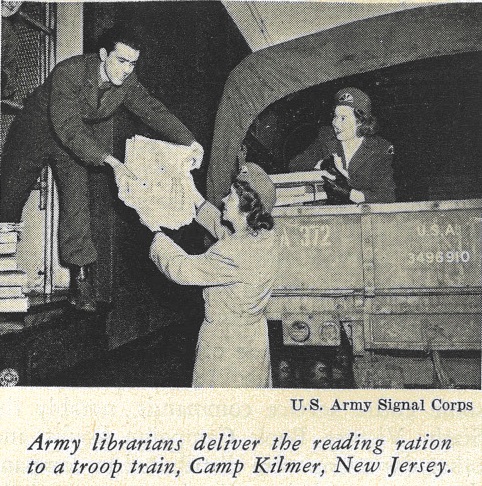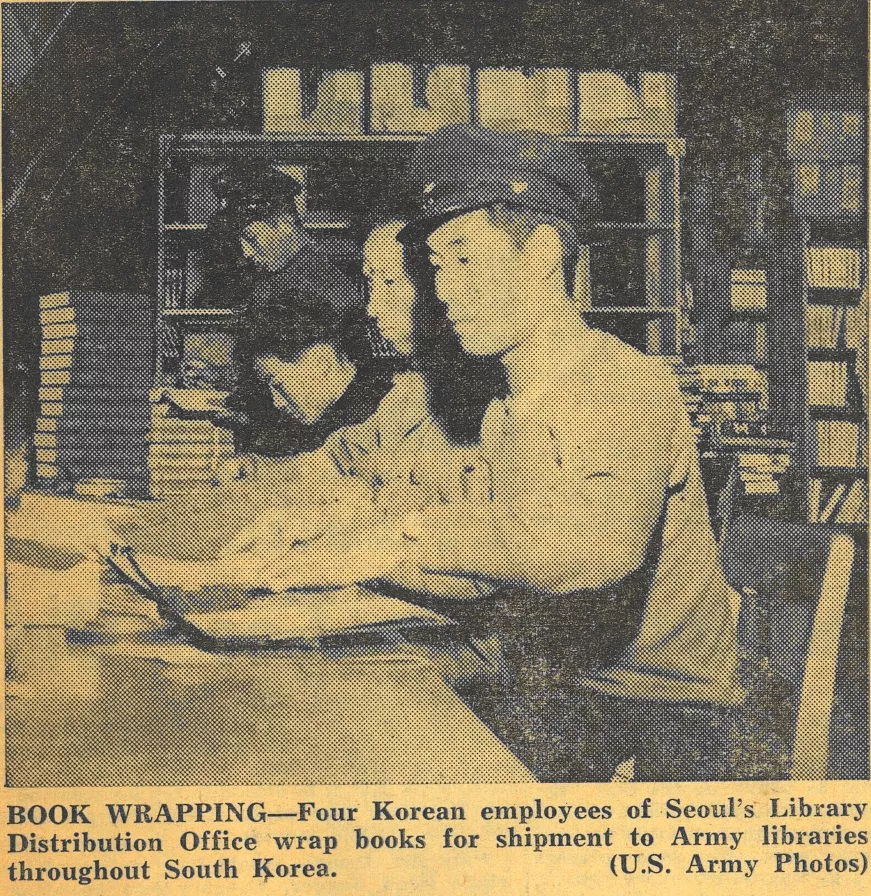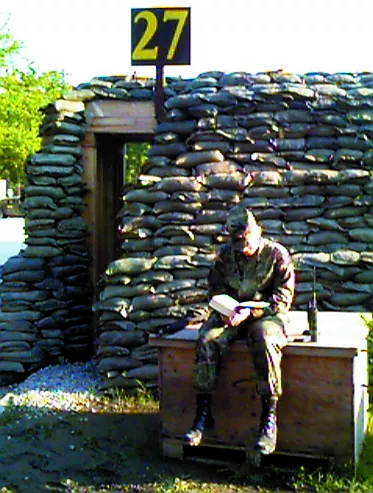1947
While the deep roots of our program can be tracked back to the Revolutionary War and the books the soldiers chose to carry with them, the Army MWR Library as we know it today started during WWI. In 1917, the American Library Association (ALA) established the War Library Service under the direction of the Librarian of Congress. This new quasi-military service provided a variety of library support services to soldiers and sailors during World War I.
Four years later, the Army Library Service was formally established as an activity of the Adjutant General's Office in the War Department. At this time there were 228 libraries on Army posts in the United States, the Philippine Islands, and Hawaii and Panama. To alleviate a shortness of funds, traveling library collections were developed and became a means to refresh the post collections. Initially, traveling libraries consisted of twenty-five volumes each; they were later expanded to fifty or sixty volumes.
Although the framework for Army Library Service had been established, little was done to support the program throughout the 1930's. Corps area librarians were not replaced after resignation, and travel budgets were cut. The morale value of libraries during the preceding war was recognized, but the fact that professional librarians had operated those libraries was overlooked or minimized.
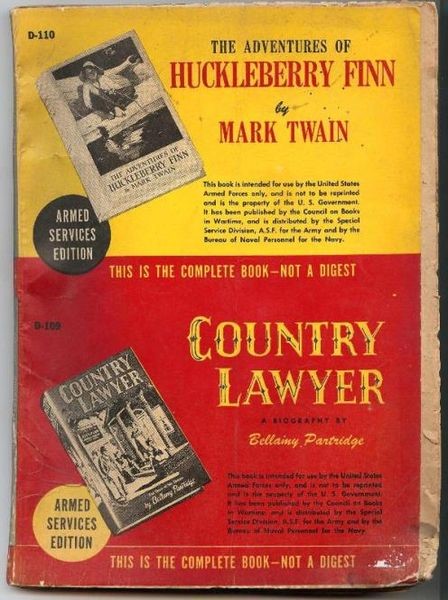
Despite the fact that in the spring of 1945 the Library Section was elevated to branch status within Special Services, certain members of Congress speculated that there was no need for postwar military library services and initiated an effort to disband the service and office. However, many post commanders realized the morale building effects and educational benefits of libraries and successfully petitioned for their continuation.
As the Cold War began and the need for a strong military became evident, local commanders and troop morale heavily influenced Congress to budget more dollars for morale, welfare and recreation (MWR) programs including library support. The Korean and Vietnam conflicts strengthened the Army's support elements, and morale, welfare and recreation programs grew. Since the 1990’s, libraries have become one of the most heavily used MWR facilities on military posts worldwide.
As the 21st century began, libraries expanded to include online reference and recreational services both in the library and remotely from the office and home. In 2005 FMWRC established the General Library Information System (GLIS) to provide system wide access of Army MWR Library materials. This eventually morphed into the current Army MWR Library where patrons are able to use any Army MWR library facility as well as our online resources. Additionally, the Library Program continues to provide paperback book kits to soldiers stationed in remote locations and those involved in contingency operations such as Panama, Somalia, Desert Shield/Desert Storm, Bosnia, Kosovo and Operation Enduring Freedom, Operation Iraqi Freedom and . Today, the importance of morale and continuing education for the soldier is recognized throughout the military services. MWR libraries, often called general libraries, provide essential support to those and many other mission areas. Wherever there are soldiers, Army MWR libraries provide mission essential support, well being, and educational services.
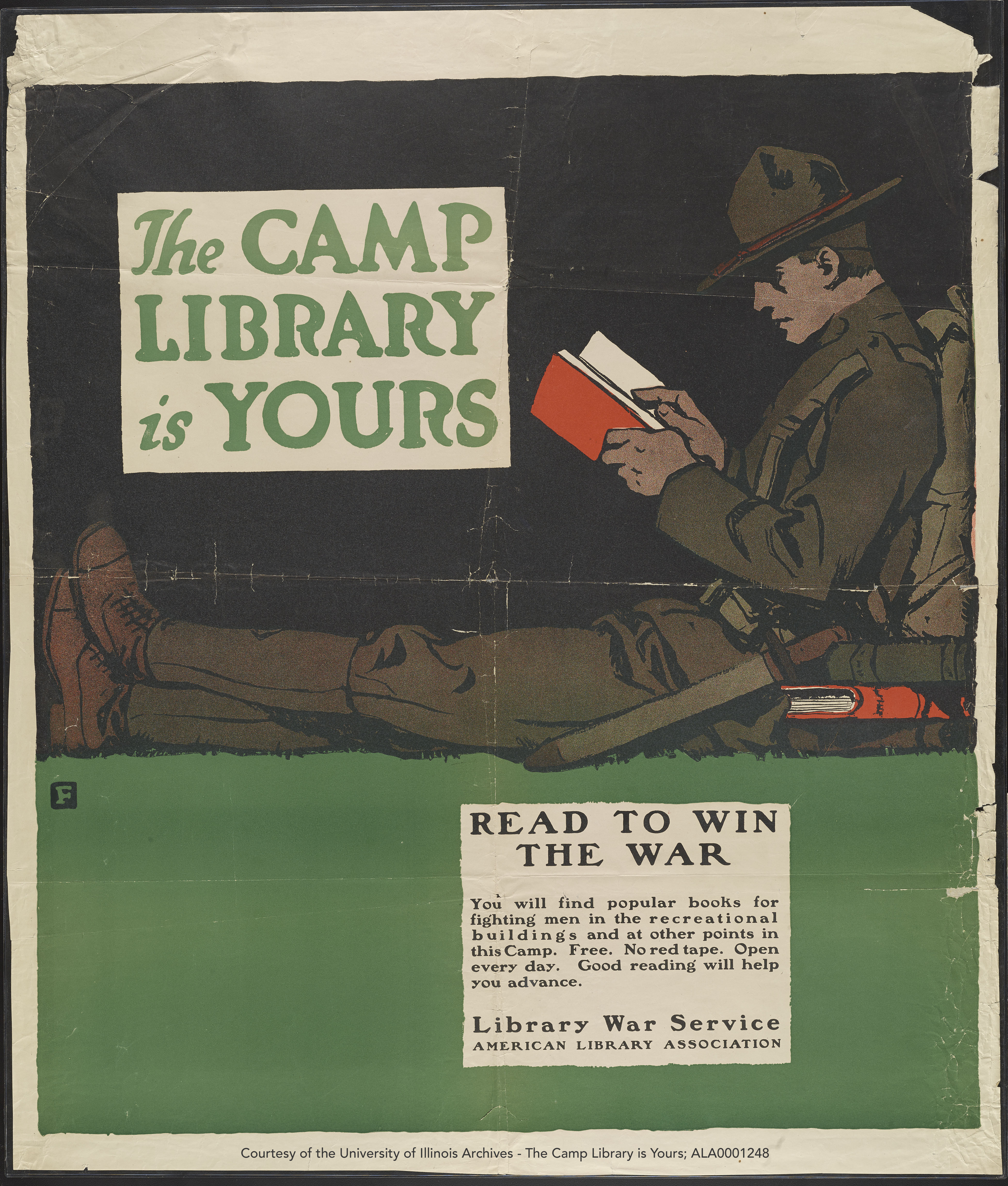
In 1940, a permanent staff position called the War Department Representative of the Army Library Service was established in the Morale Branch of the Adjutant General’s Office. A professional librarian was selected to fill this position with the primary responsibility to select and purchase books for Army posts, advise the War Department on library matters, and provide guidance through the next lower levels of command. The detailed planning and organizing of library service was to be carried out at service command headquarters in the United States and at the theater headquarters overseas.
A major reorganization of the Army Department took place in 1942 to gear up to support the war effort at the beginning of World War II, and the Morale Branch was renamed the Special Services Division and placed under the Army Service Forces Headquarters of the War Department. The other two principal Army elements were the Army Ground Forces and the Army Air Forces. The Army Library Service became the Library Section of Special Services and remained a vital part of this division for the next three decades.
That same year, the Library Section became part of the Education Branch of Special Services Division. However, as the division’s missions expanded, and the educational and indoctrination missions became more disparate and complex, the Education Branch split off in November 1943. Libraries, because they were less indoctrinational and served a broad mission, remained with Special Services.
